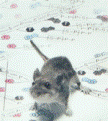Papers in the Biological Sciences

Jay F. Storz Publications
Document Type
Article
Date of this Version
May 2003
Abstract
The effects of natural selection are generally locus-specific, whereas migration, drift, and inbreeding are expected to have relatively uniform effects across the entire genome. This suggests that multilocus surveys of multiple populations can be used to distinguish selection from demographic effects. The purpose of this study was to test for evidence of selection on protein polymorphism in natural populations of mice in the genus Peromyscus. We analyzed published data from geographic surveys of allozyme variation and used a coalescent- based simulation model to identify specific loci that deviated from neutral expectations. Observed FST values generally exhibited a remarkably close fit to the expected neutral distributions, indicating that the majority of loci are simply tracking stochastic demographic processes. A smaller number of loci exhibited highly significant departures from the expectations of the neutral model and thus appear to be tracking the direct or indirect effects of selection. Most departures from neutrality were characterized by FST values that far exceeded neutral expectations and were therefore attributable to spatially varying selection. Interestingly, the albumin locus was implicated as a candidate gene for local adaptation in four different species of Peromyscus. The results also demonstrate that selection can severely bias marker-based estimates of neutral parameters.


Comments
Published in Evolution 57:11 (2003), pp. 2628–2635; doi 10.1554/03-156 Copyright © 2003 The Society for the Study of Evolution. Published by Blackwell Publishing. http://www.blackwellpublishing.com/0014-3820 Used by permission.